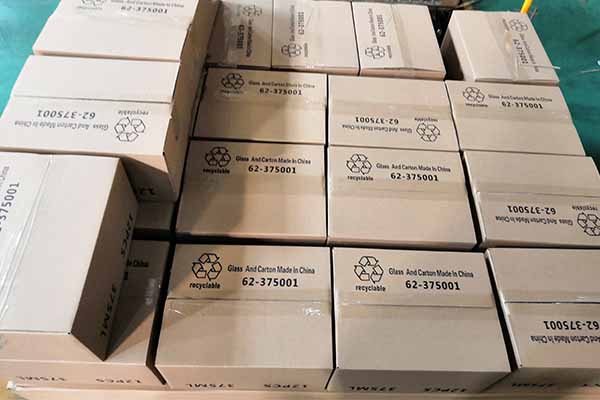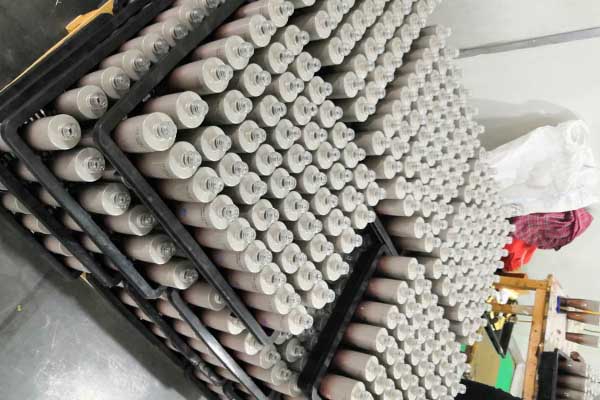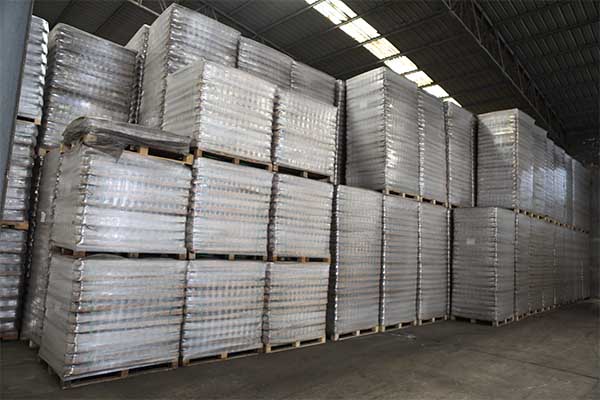When buying their beauty products, billions of men and women are bombarded with many choices. Hundreds of brands tempt them with the supposedly best products for skin, hair and body. In this seemingly endless sea of possibilities, one factor in particular has a significant influence on the purchase decision: the packaging. Because it is usually the first thing the customer sees. And as in life, first impressions count!
The ideal cosmetics glass packaging attracts the customer’s attention, reflects initial product characteristics, and informs him or her about the ingredients contained. But finding the right packaging for your own product is not that easy. After all, in addition to appearance, a whole range of other factors play an important role.
In this guide, we will show you how to approach the topic of cosmetic packaging the right way.

What skin care packaging is there?
Now that it has become clear how important the right packaging for cosmetic products, let’s turn our attention specifically to the question of what cosmetic packaging is actually available to choose from.
First of all, the most important thing: the packaging of a product can be compared to a Russian matryoshka doll. Each package consists of at least two, but usually three or more nested levels.
The first level is the container into which your product is filled. This means the container that is in direct contact with your product.
The second level is the packaging box. This contains your already filled product, e.g. your perfume bottle or cream jar.
The third level is the product box, which contains the box with your product. This, as we will see, is enormously important, especially in online retail.
Packaging level 1: The Container
As already mentioned, the choice of suitable cosmetic glass bottles and jars is not just about the design of the box in which the product is packed. The conception of a coherent cosmetic packaging already starts with the choice of the container.
The container
When it comes to the vessel body, there are six basic options available to you:
- Jars
- Bottles or vials
- Tubes
- Bags/sachets
- Ampoules
- Powder compacts
Closure Caps
Not only do you have several great choices to pick from when choosing a container, but the closure of the container also represents an important decision.
Common types of closures include:
- Spray heads
- Pump heads
- Pipettes
- Screw caps
- Hinged lids



Material
Once you have decided on a suitable cosmetic packaging container and closure, there is still the question of the right material. Here, too, there are almost endless possibilities, but the most common materials in the trade are:
- Plastic
- Glass
- Wood
Still the most commonly used packaging material is plastic. Why it is so popular is obvious: plastic is cheap, light, changeable and robust. It can be used for almost any product and shaped in any way.
It should be noted, however, that customers of very high-value products often expect them to be sold in glass or at least glass-polymer containers. In addition, the topic of ‘sustainable packaging’ is also becoming increasingly important for cosmetic products, so that there is a growing consumer base that largely rejects plastic packaging for ethical reasons.
Glass, as just mentioned, is particularly suitable for high-priced products and products marketed in the premium or ‘eco’ segment. These include, for example, perfumes, aftershave or fine facial creams. A distinction must be made here between white and amber glass. Customers often associate brown glass with the terms ‘nature’, ‘organic’ and ‘sustainable’, while white glass is ‘cleaner’ and appears more luxurious.
Often, a product container consists of several materials, such as a jar made of glass and a lid made of plastic or wood.
It is important to weigh up all the advantages and disadvantages before deciding on a material. Glass is more noble and environmentally friendly, but it is also heavier and more fragile than plastic, for example. This usually means higher transport and storage costs. Think carefully about which material suits the character of your product. If you sell organic aloe vera liquid soap from sustainable cultivation, an cobalt blue/ amber glass lotion bottle is more suitable for your product than a hard plastic bottle.

Amber Essential Oil Glass Bottle

Cobalt Blue Lotion Bottle
Packaging level 2: The Product Box
Once you have decided on a glass cosmetic container including closure, the next step is to select a suitable product box.
This must appeal to the customer on an emotional level and also provide at least the legally required information.
However, here is a brief overview of the basic box types that are available ‘off the shelf’:
- Folding boxes
- Sliding boxes
- Slip lid boxes
- Cardboard boxes
- Pillow boxes
- Magnetic boxes
- Hinged lid boxes
- Coffrets/Schatoule boxes
Packaging level 3: The Product Box / Shipping Boxes
Product boxes are very important, especially in e-commerce. This is because the product box or shipping box is the packaging level with which the customer first comes into contact when placing an online order.
The positioning of the brand or product line should already be clearly communicated here and the customer’s anticipation of the product should be increased. If the customer has a great unboxing experience, he or she will be in a positive mood towards the product and the brand right from the start.
Conclusion
The glass packaging of cosmetic product is a key factor in determining whether a customer becomes aware of your product and whether a purchase decision is made. In addition, the demand for sustainable product packaging is increasing and thus requires innovative design and material solutions.
To successfully navigate the complex “packaging jungle” and find the cosmetic packaging for your product that perfectly matches your branding and buyer preferences, trust an experienced packaging manufacturer like SHNAYI.
WE’RE CREATIVE
WE’RE PASSIONATE
WE’RE THE SOLUTION
Email: info@shnayi.com
Tel: +86-173 1287 7003
24-Hours Online Service For You
Post time: 11月-22-2021














